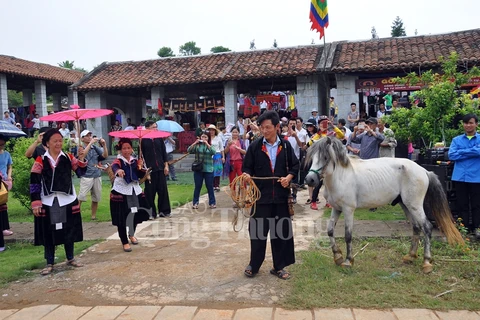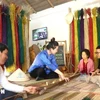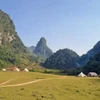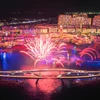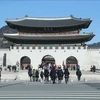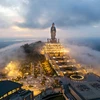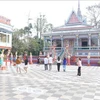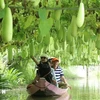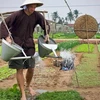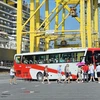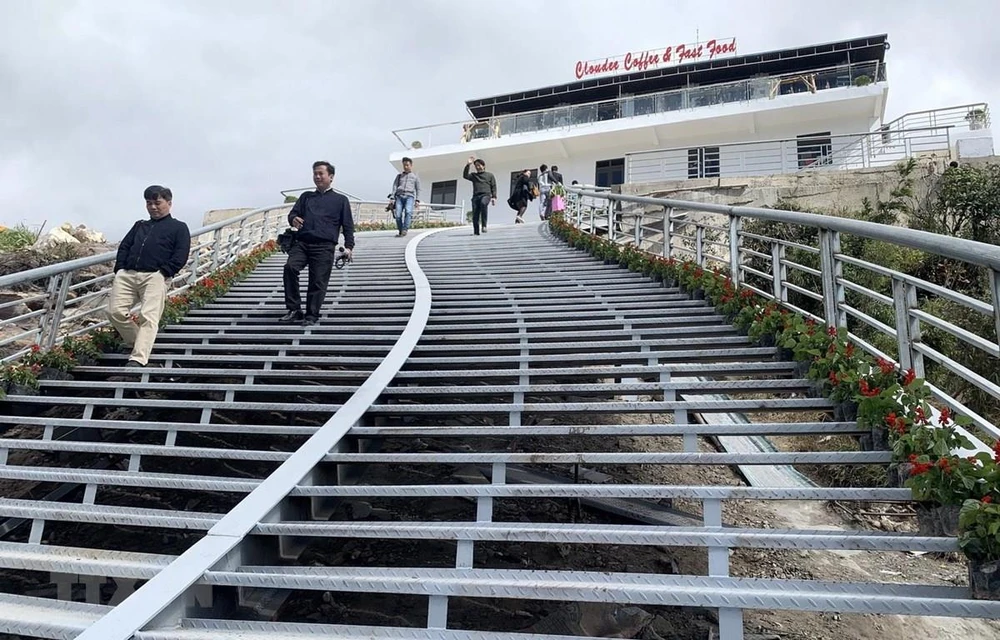
Lai Chau (VNA) – The Sun Gate Group on November 16 inaugurated the first stage of Rong May (Cloud Dragon) Bridge ecological tourism site, as part of Thac Trang (White Falls) tourism project in Son Binh commune, Tam Duong district, the northwestern mountainous province of Lai Chau.
With beautiful scenery and mild climate all year round, the tourism site also connects the centre of Sa Pa tourism area with Tac Tinh waterfalls, Tien Son cave, Pu Sam Cap cave and community-based tourist areas of Thai, Mong, Dao, Lao, Lu ethnic minority groups.
Chairman of the Tam Duong district People’s Committee Tu Huu Ha said the site will contribute to local socio-economic development and job creation for local workers.
The site, built at a total cost of 1 trillion VND (43.4 million USD) in January 2018, will operate for up to 50 years with facilities such as a hotel, an elevator system and a glass-floored suspension bridge up to European standards, a range of bungalows, a swimming pool and an entertainment area.
The first stage costs 300 billion VND, serving 5,000 – 50,000 visitors each year with sightseeing, resort, adventure travel services.
Rong May attracts visitors with its breathtakingly beautiful natural scenery of the foggy land with the undulating mountains of the Northwest. It promises to satisfy visitors with the natural wonders, a masterpiece given by nature.
To set your foot on the skywalk, travelers will first enter a transparent glass elevator. For the first time in Vietnam, there is a lifting system with a transparent glass cabin at an altitude of 2,200m above sea level and 548.5m above the top ravine of the Hoang Lien Son mountain range. The elevator will take visitors through the clouds, freely immersed in the stunning nature of the northern mountains, especially the majestic Fansipan peak, also known as the rooftop of the Indochina peninsula.
Carrying up to 30 passengers at one time, it is estimated to transport 1,200 passengers per hour. This is the fastest way to get to the top of the mountain, admiring the magnificence of O Quy Ho Pass as well as the new glass bridge.
The Glass Bridge system is reaching out from the 50m cliff. Cloud Dragon Skywalk is made entirely of transparent glass. There are three layers, each 2cm thick, assembled rigidly together with special glue. The total thickness of the glass surface is 7 cm. The bridge has a width of about 5m with a length of 50m from the lift chamber to the sandstone cliffs. It can endure the maximum weight of 3,000 people at the same time. Standing on the glass bridge, tourists will have a sense of freedom to witness the depth of the haze below, or zoom their eyes away, enjoy the majestic natural scenery, and feel the rushing wind and the clouds.
Since Sapa is a highland town, the way leading there is not easy to drive, especially in the rainy season, when the road surface is slippery, so it is not a wise choice paying a visit at that time, usually from May to August. The best time is from January to April and from September to November.
Spring is the festive season of the hill tribes, so you are able to witness a wide range of festivals and competitions. It’s also the blooming time of many flowers in the mountains. As a result, Sapa looks more brilliant.
During the autumn (September and October), the terraced fields will put on the dazzling yellow color of ripe rice. It’s also a signature of Sapa. At these times, the weather is relatively stable with sunny days and cool nights, perfect for sightseeing, photo-taking, and camping trips.
The weather can be considered as a specific characteristic of O Quy Ho. Since two-thirds of the route is in Tam Duong District, Lai Chau, and the rest in Sa Pa, you can feel changes in the climate as you travel along the pass. In the summer, while the weather is nice in the Sapa side – the misty mountain town is a cool and little cold, the weather in Tam Duong’s side is extremely hot with a blazing and burning sun, while trees are withered in the sunlight. Likewise, in winter, if it is warm at a side of Tam Duong, it is foggy and cloudy at the side of Sapa./.
